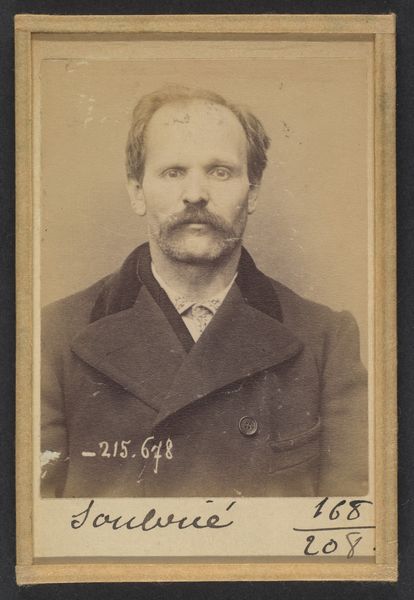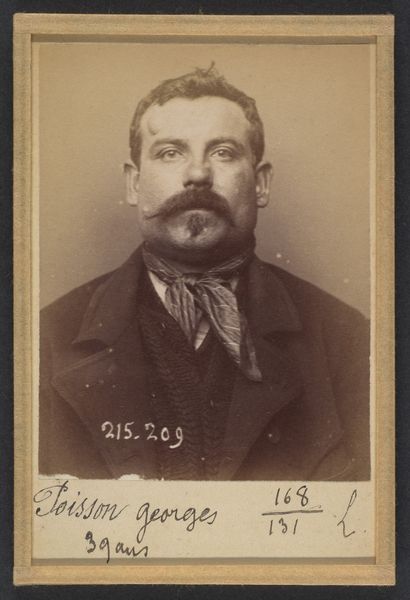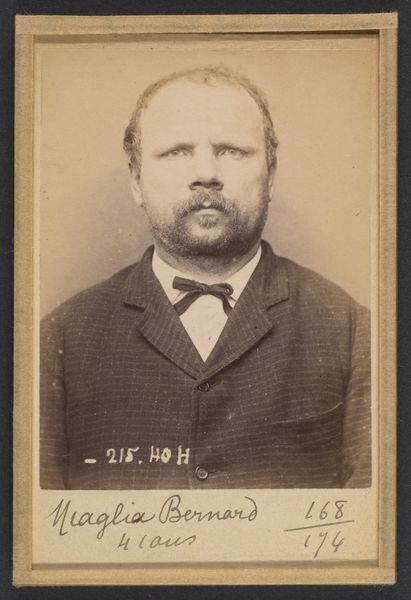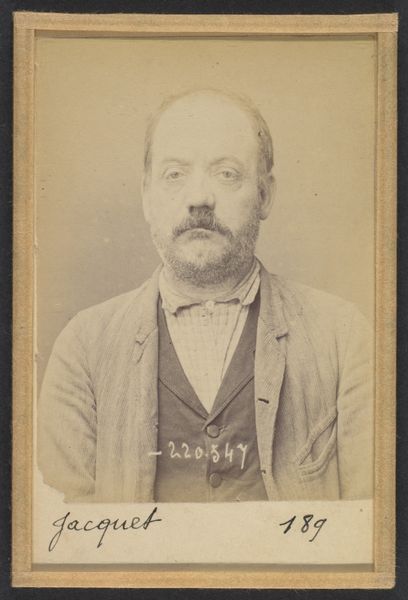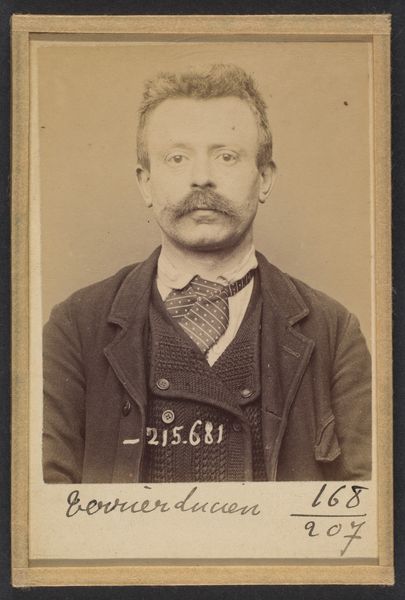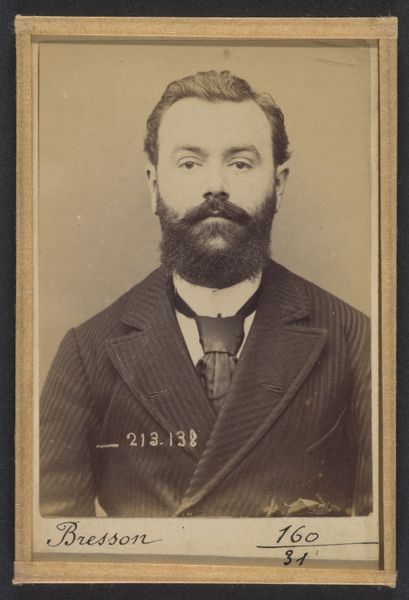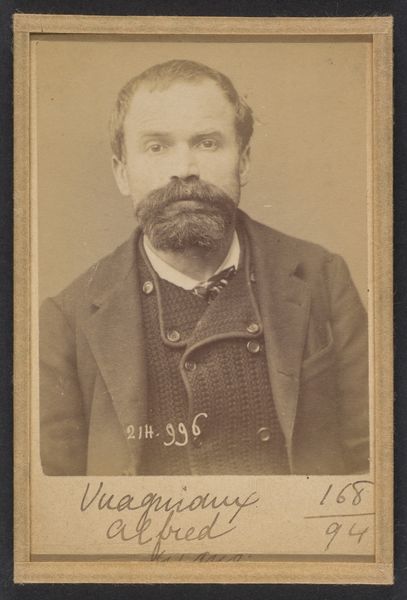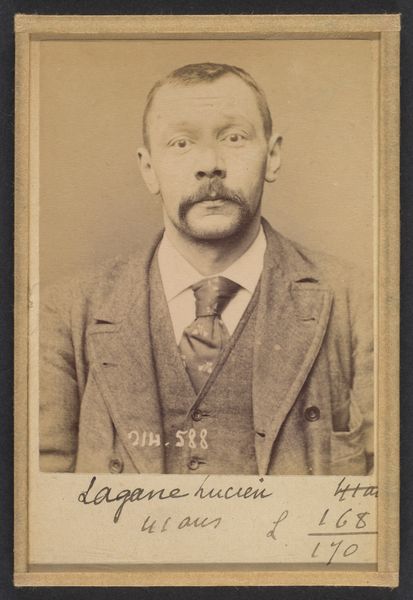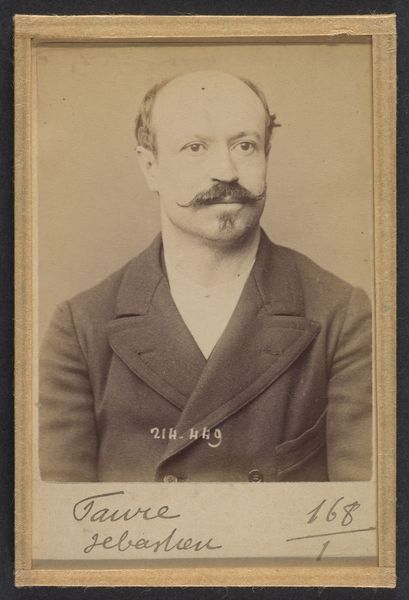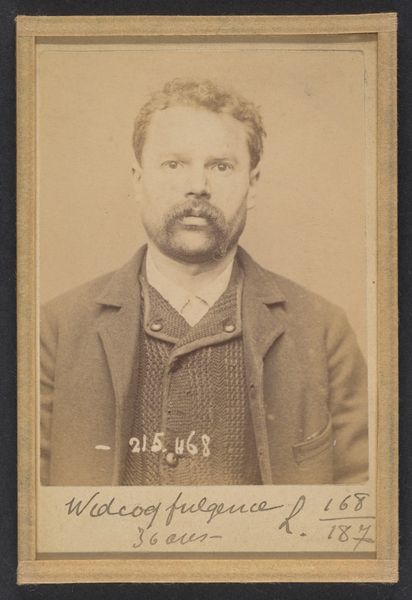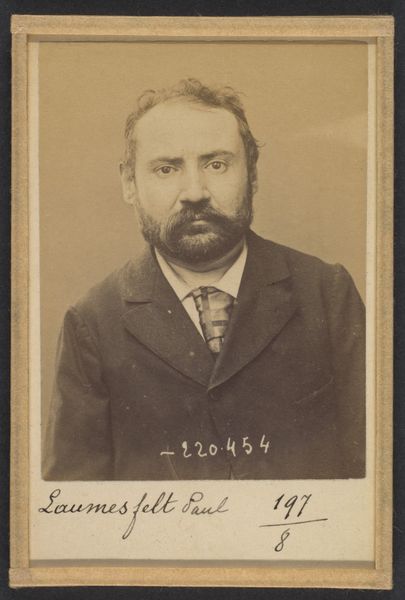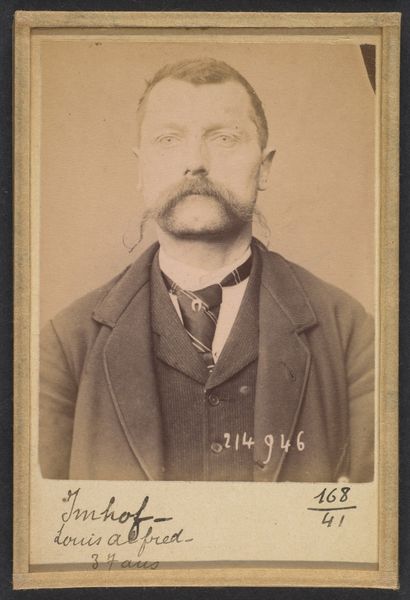
Decker. Jacques. 43 ans, né à Grodeskersheim (Bas-Rhin). Tailleur d'habits. Anarchiste. 9/3/94. 1894
0:00
0:00
photography, albumen-print
#
portrait
#
portrait
#
photography
#
albumen-print
#
realism
Dimensions: 10.5 x 7 x 0.5 cm (4 1/8 x 2 3/4 x 3/16 in.) each
Copyright: Public Domain
Curator: This stark image, "Decker. Jacques. 43 ans, né à Grodeskersheim (Bas-Rhin). Tailleur d'habits. Anarchiste. 9/3/94." captured by Alphonse Bertillon in 1894, is an albumen print now residing at the Metropolitan Museum. What strikes you initially? Editor: There's an incredible austerity here. The limited tonal range and symmetrical composition draw the eye immediately to the subject's face, creating an almost confrontational encounter. It is simple but haunting. Curator: Absolutely. Bertillon's portraits, while seemingly straightforward, were groundbreaking in their time. This image is an early example of forensic photography, documenting Decker's identity within the criminal justice system, labeled as an Anarchist. We need to unpack what being labeled “Anarchist” meant at the time and consider how such labeling was deployed to create negative identities in opposition to established systems of government. Editor: The flatness exacerbates this starkness. Without chiaroscuro to soften features, Decker's expression, etched with the signs of experience, takes center stage. He appears worn, yet something defiant flickers in his eyes. Curator: It's in direct opposition to conventional portraiture. Rather than celebrate Decker's individuality, Bertillon uses photography as a tool for social control and marginalization, attempting to fix and categorize him in a single immutable image and use him to speak about an entire sociopolitical demographic. The details—the inscription detailing his name, age, profession, place of birth—are bureaucratic data points rather than signifiers of selfhood. Editor: Still, it is in those very bureaucratic, informational qualities that a certain degree of aesthetic impact can be extracted. We see the very shape of an anarchic personality through a series of planes, lines, tones. The image has the power of any strong drawing. Curator: I think framing this image purely through aesthetics flattens its sociopolitical meaning. It invites us to question how power operates through representation, how marginalized individuals are subjected to surveillance, scrutiny, and labeling by oppressive systems. We must engage with these issues when interpreting such photographs. Editor: A valid concern, but I don’t think analyzing the image for artistic merit necessarily entails neglecting the historical context, or undermining its critique of established authority. Rather, focusing on the technical and visual qualities allows viewers an accessible entry point that might otherwise be obscured by intellectual posturing. Curator: Ultimately, Bertillon's image becomes an unwitting mirror. His method for maintaining control ends up documenting his subject as a person—both shaped and defined by social and political circumstances. Editor: Indeed. We come to see it as a sobering meditation on surveillance and power—that uses restraint as its most potent tool.
Comments
No comments
Be the first to comment and join the conversation on the ultimate creative platform.
